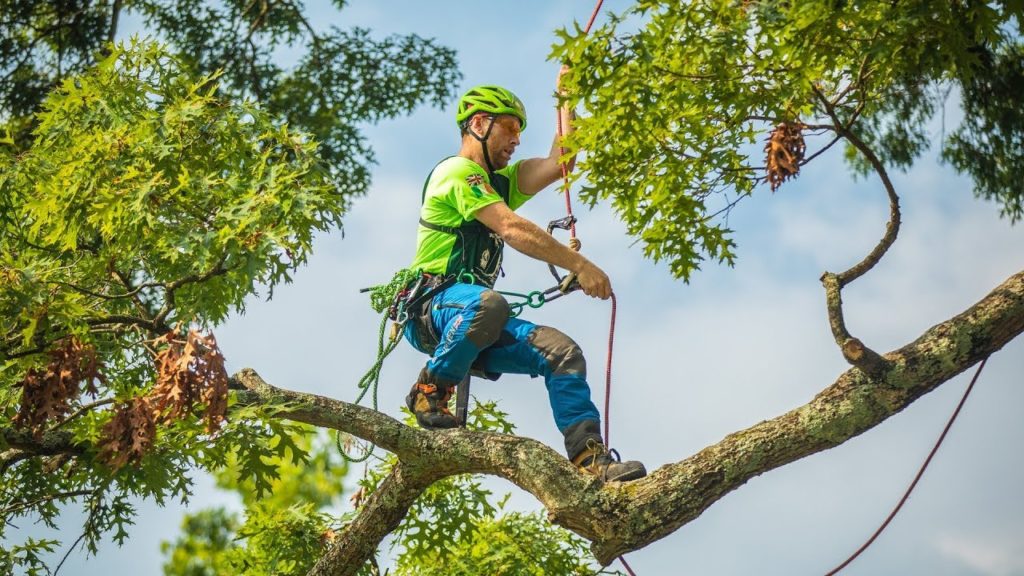You’re not the only one who finds tree removal to be an intimidating process. Negotiating the removal of a tree may be a difficult task financially and logistically. We’ll take you step-by-step through the whole procedure in this in-depth guide to help you successfully negotiate the challenges of tree removal. We can help if a sick tree is endangering your property or you just need to make room for a new project.
Things to Know before Negotiate Tree Removal
It’s important to comprehend the reasons for tree removal before we continue into the bargaining process. The basis of your negotiating approach is laid in this stage. Frequently cited causes for tree removal are:
Safety Concerns: Ill-healthed, dead, or damaged trees may seriously endanger the safety of everyone on your land, including you. The first thing you should do is identify these threats.
Property Development: You may need to remove some trees to create a way for your project if you want to construct an addition, a new building, or landscape your property.
Disease control: In order to safeguard your landscape, infected trees must be removed since they may transmit diseases to other healthy trees in your yard.
Damage from Roots: Tree roots may erode pavement, foundations, and subterranean utilities, requiring their removal.
Overcrowding: In some situations, removing trees may be necessary to enhance the general well-being and visual appeal of your environment.
Evaluating the Trees that Need to be Removed
After determining that tree removal is necessary, it’s crucial to determine how big the endeavor will be. Think about the following elements:
- how many trees need to be taken down.
- How big and how old the trees are.
- how close the trees are to your house or other buildings.
- Equipment for tree removal is easily accessible.
- Permits and local laws are needed in order to remove trees.
Investigation before Negotiate Tree Removal Business
Make sure you do your research before negotiating with a tree removal business. The stages involved in this are as follows:
Obtain Multiple Quotes: Make contact with several tree removal firms to obtain thorough project estimates. Verify that the estimates include all expenses, including those for cleaning, stump removal, and cutting.
Examine Credentials: Confirm the tree removal service’s qualifications and insurance. To safeguard yourself in the event of an accident, make sure they have a license, a bond, and insurance.
Local Regulations: Find out what the laws in your area say about taking down trees. Removal limitations may apply in certain regions, particularly when it comes to historic or protected trees.
Ask for References: Inquire about references from the tree removal businesses and get in touch with former clients to find out how satisfied they were with the work.
How to Negotiate Tree Removal?
It’s time to confidently start on How to Negotiate Tree Removal process now that you have bids and facts at your disposal. This is how to successfully negotiate the removal of a tree:
1. Clearly State What You Need
To begin a negotiation with a tree removal firm, make sure your demands are well stated. This covers the quantity of trees that need to be taken down, the particular services needed (trimming, clearing stumps, cleaning), and any additional requirements you may have.
2. Go Through the Quotes
Examine the quotations you have obtained from several tree removal firms. Examine the available services and prices. Be mindful of any extra or hidden costs that may not be immediately obvious.
3. Request Savings
Never hesitate to haggle over a price or seek for reductions. In order to get your business, tree removal firms will often cooperate, particularly if you need to remove many trees.
4. Go Over Payment Choices
Discuss payment choices with the tree service provider. Certain businesses could provide financing or adjustable payment schedules. Make sure you are acquainted with and understand their rules regarding payment.
5. Ask for a Composed Contract
After you and the tree removal business have come to an agreement, get a formal contract that includes all the information about the job, such as the cost, schedule, scope of work, and any warranties or guarantees offered. Both parties are safeguarded and agreement is maintained by this contract.
Getting Ready to Remove a Tree after Negotiation
Now that the talks have been successfully concluded, it is time to get ready for the tree removal procedure itself. This is what you must do:
Clear the Space: Get rid of any objects or barriers close to the trees that need to be taken down. The tree removal staff will be able to operate more effectively as a result of this.
Notify Neighbors: Give your neighbors early notice if the removal of the tree could have an impact on them or their property. A clear line of communication helps avoid misunderstandings.
Obtain All Required licenses: Make sure you have all the authorizations or licenses needed to remove trees in accordance with local laws.
Get Ready for cleaning: Talk about how the tree removal firm will deal with the cleaning and debris once the tree is removed. Make sure you understand exactly what their cleaning duties are.
The Process of Tree Removal
The tree removal personnel will show up on the appointed day to complete the task. What to anticipate along the procedure is as follows:
Safety Procedures: To safeguard both your property and themselves, the staff will follow safety protocols. They will use the required tools and wear the proper safety gear.
Tree Cutting: This is usually the first step in the removal procedure. To avoid causing harm to neighboring buildings, the workers will gently chop down the tree in pieces.
Stump Removal: The workers will take out the stump after the tree has been chopped down. Different stump removal techniques exist, so talk to the tree removal firm about this.
Cleaning: The group will tidy up the region, getting rid of any leaves, branches, and other trash. Ascertain that the cleaning satisfies your standards and is comprehensive.
Disposal: Talk about the plan for getting rid of the wood and trash that was removed. While some businesses would volunteer to remove it, others could leave it for you to manage.
After Tree Removal Care
Following the tree’s removal, there are a few things to think about:
Examine the job: Pay special attention to the completed job to make sure it lives up to your expectations. Discuss any problems you find with the tree removal business.
Replant or Reconfigure: To maximize the available space in your landscape if you removed trees for a landscaping job, think about adding new trees or rearranging your existing ones.
Tree Preservation: To preserve the health and lifespan of your surviving trees, think about putting in place a tree care strategy.
Typical Errors to Avoid while Negotiating Tree Removal
Complications may arise from several typical blunders made while discussing tree removal. Steer clear of these traps to make sure the procedure goes smoothly:
Not Getting Multiple estimates: You run the risk of overpaying if you don’t get estimates from many tree removal companies.
Ignoring Permits: Failing to get the required authorizations may lead to legal troubles and penalties.
Absence of a written contract: verbal contracts carry some risk. For your protection, always demand a formal contract.
Insufficient Research: If you don’t do enough research on tree removal services, you can end up selecting an untrustworthy or underqualified provider.
FAQs
What is the price of tree removal?
The size, location, and services needed (such as stump removal) are just a few of the variables that affect the price of tree removal. The typical cost of removing a tree may vary from several hundred to several thousand dollars. It’s recommended to collect quotations from many tree removal firms in order to get an appropriate estimate.
Do I need permission to remove a tree?
The removal of a tree may need a permit or other authorization in many places, particularly if the tree is protected or a part of a historic tree program. It is essential that you familiarize yourself with your local laws and secure the required permissions in order to prevent penalties or legal issues.
Is there a way to avoid having to remove the whole tree?
Absolutely, there are options besides getting rid of all the trees. You may investigate choices like tree trimming, pruning, or moving the tree, depending on the circumstances. Speak with an arborist to find out the best way to meet your goals and protect the tree at the same time.
What qualities does a tree removal service have?
The following factors should be taken into account when selecting a tree removal service: reputation, insurance, qualifications, and cost.
To safeguard your interests, confirm that they are insured, bonded, and licensed. To assess their dependability and client happiness, you could also go through reviews and ask for recommendations.
How can I guarantee a successful and secure tree-trimming procedure?
In order to guarantee a safe and effective tree removal procedure, make sure the surrounding area is cleared, inform nearby residents if needed, and get the relevant licenses.
Additionally, let the tree removal firm know what you expect from them and make sure you have a formal agreement that covers all aspects of the process, including cleaning and safety precautions.
Conclusion
Although negotiate tree removal may seem like a difficult undertaking, you may effectively manage the process if you have the appropriate knowledge and strategy.
Don’t forget to evaluate the extent of your project and determine if tree removal is necessary before proceeding. To make wise selections, planning and research are essential.
Clear communication, a careful examination of the quotations, and flexibility from both parties are critical in negotiations. Making the most of your cleared area after tree removal requires careful planning and attention to post-removal details.


